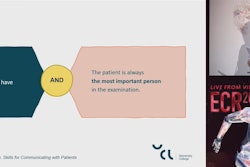Out-of-network billing by radiologists – often referred to as “surprise billing” – dropped significantly beginning in 2007 and imaging claims are now almost completely in network, according to a recent study.
In an analysis of billing trends, the rate of out-of-network (OON) imaging claims declined from 12.6% in 2007 to 1.1% in 2021, with the decline occurring broadly across imaging modalities, noted lead author Jay Parikh, MD, of the University of Texas MD Anderson Cancer Center in Houston.
“This consistent decline over time likely reflects in part effective persistent good-faith negotiations between radiology practices and commercial payers in the context of dynamic ongoing contractual landscape,” Parikh and colleagues wrote. The study was published January 19 in the Journal of the American College of Radiology.
Out-of-network balance billing occurs when an individual with private health insurance is administered unanticipated care from a clinician who is not in their health plan’s network. Given the potential financial burden to patients, Congress passed the No Surprises Act in 2020, which holds patients responsible only for the in-network cost-sharing amounts of their insurance plans, the authors explained.
They added that policymakers have implicated radiology as a specialty that is potentially problematic for surprise billing, yet the rate of out-of-network billing by radiologists over time has not been previously studied, they wrote.
Thus, to clarify the degree to which radiologists are in-network and if the out-of-network rate worsened or improved over time, the group assessed the share of radiologists’ imaging claims that were out-of-network over a 15-year period. In addition, they computed the out-of-network rate by imaging modality, with claims categorized as CT, MR, nuclear medicine (NM), ultrasound, radiography or fluoroscopy (XR), and interventional procedures.
In total, they identified 80.4 million imaging claims for 19.5 million unique individuals over the study period. Of these, five million (6.3%) were out-of-network claims, with the majority for XR (56.8%), followed by ultrasound (15.4%) and CT (14.9%).
Overall, the out-of-network rate fell steadily from 12.6% in 2007 to 1.1% in 2021, the group found. By modality, there were similar declines in the out-of-network rate over time. For example, among diagnostic imaging, NM had the largest decline, from 14.5% in 2007 to 1.0% in 2021, whereas MR had the smallest decline, from 9.7% in 2021 to 0.8% in 2021. Similarly, the out-of-network rate for interventional procedures declined from 12.3% in 2007 to 0.8% in 2021.
For all modalities and overall, the linear trends of these declines were statistically significant, the group noted. And by 2021, radiologists practiced almost exclusively in-network, according to the researchers.
“These overall and modality-specific trends may suggest effective efforts of radiologists to negotiate rates to be in network rather than engage in [out-of-network] billing and that insurers have sought to expand their radiology networks,” the authors concluded.
The full article can be found here.



















